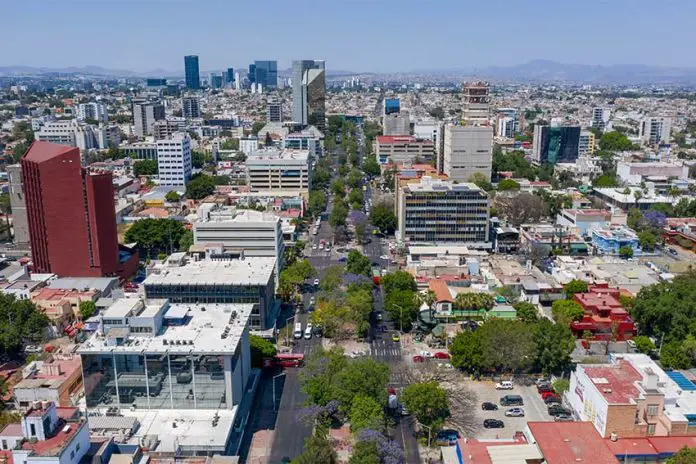Guadalajara’s Colonia Americana neighborhood — recently ranked as the world’s coolest neighborhood by Time Out magazine, is now also a Barrio Mágico, or Magical Neighborhood — a tourism designation granted to remarkable neighborhoods in Mexico’s cities.
Mexico’s Tourism Ministry (Sectur) created the program in 2022 to promote tourism in Mexico’s major population centers. It’s similar to Sectur’s Pueblos Mágicos (Magical Towns) program, which highlights towns across Mexico with historical and cultural value. As large cities are ineligible for the Pueblos Mágico titles, the Magical Neighborhoods program seeks to highlight certain locations or areas with tourism appeal within Mexico’s cities.

Jalisco’s Tourism Minister Vanessa Pérez Lamas said that those who have had the chance to explore Colonia Americana “can verify that it is indeed a very cool neighborhood; it is indeed a Magical Neighborhood, and this designation is extremely deserved.”
Colonia Americana’s designation as a Barrio Mágico was awarded by Mexico’s Tourism Minister Miguel Torruco Marqués, though not in Guadalajara, but in Puerto Vallarta. In the same ceremony, Torruco also updated the designation of Magical Towns in Jalisco: Tapalpa, Tequila, Mazamitla, Tlaquepaque, Mascota, Talpa de Allende, San Sebastián del Oeste, Lagos de Moreno and Ajijic.
To date, Sectur has designated 177 towns in Mexico as Magical Towns and named 34 Magical Neighborhoods across the country. Just like the other towns and neighborhoods in the two programs, Colonia Americana will receive federal funding to renovate buildings and promote its tourism industry.
Adjoining Guadalajara’s downtown, Colonia Americana is one of Guadalajara’s oldest neighborhoods. Built in 1898, it was designed by German engineer and architect Ernesto Fuchs, who added European features to the neighborhood’s streets and avenues. Some of the neighborhood’s main landmarks include the Expiatory Temple of the Blessed Sacrament, Revolución Park and the Museum of Arts of the University of Guadalajara (MUSA). The neighborhood is also home to many restaurants and bars.
Time Out has described the neighborhood as “an edgy blend of art deco and neoclassical mansions with artists’ squats and warehouses containing some of the city’s best music venues.”
However, the neighborhood’s popularity has led to gentrification, real estate speculation and insecurity, forcing many locals to exit the neighborhood or close their businesses due to the increase in rental prices.
With reports from El Informador
